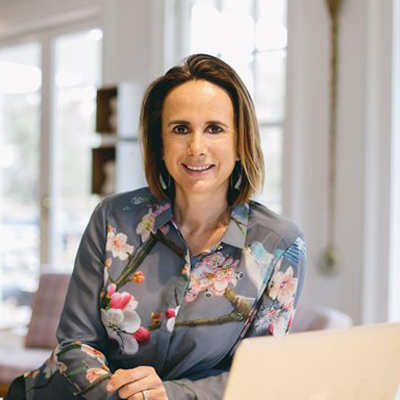Though she returned to New Zealand shores only a few years ago, Georgie Kirkcaldie Inglis has already left her indelible print on the commercial interiors of Christchurch.
The work of Kirkcaldie Commercial Interiors on Little High Eatery and other central city hot spots reflect the distinctive influences of a life in Hong Kong and travels in South East Asia.

1. You’ve had an incredibly varied and colourful career to date. What brought you to the world of interior design?
It all started with clothing. I saw an opportunity to design and source clothing for ex-pats living in Hong Kong as most garments over there are made for people with small frames. Which wasn’t ideal for our Western proportions! While we could access some of the large multi-national brands they weren’t exactly inspiring, so I got into clothing design and manufacturing.
With clothing comes colour and putting things together well, and it was this experience that initially drew me to interior design. I had always loved interiors and took great pride in our apartment in Hong Kong. After returning to New Zealand we renovated a 90 year old bungalow and that really cemented my love for creating beautiful, liveable spaces.
However it was commercial interiors that I was most deeply interested in. I was fortunate enough to get an opportunity from property developer Richard Peebles to design three new commercial spaces. My work on those jobs opened new avenues, like Little High Eatery and Lady Wigram Clubhouse.
2. Coming back to New Zealand with a fresh eye is always interesting. Would you say there is a ‘New Zealand look’ in terms of design and aesthetics? What do you think are hallmarks of our collective style?
We’re a long way from everywhere and have become very practical and creative as a result. Items and trends from the Northern Hemisphere tend to be cost-prohibitive for most Kiwis and we’ve become very good at moving outside the box to find creative solutions.
I love the use of glass, steel, cedar and concrete that’s popping up, particularly as part of the Christchurch rebuild. It’s quite an industrial look but also very New Zealand in it own way — organic and practical. We’re doing some creative and clever things in architecture.
For interiors, New Zealanders certainly love their neutrals and monochromatic tones. I’m used to a bit more colour after my time in Asia but I do think wintry colours reflect the landscapes here and speak to our alpine environment.
3. How would you describe your design methodology?
It always begins with the client, no matter how loose or detailed the brief. The budget is the next consideration as that gives me a set of rules to work within.
From there I spend time considering the ‘audience’ as I call it. Who’s using the space and what practicalities do I prioritise? For example in hospitality it’s about the number of seats within a space, the numbers moving through it and then thinking about flow and ease of movement. To what degree does it need to be inviting, a place that people want to be? If the space is a rest home I need to choose flooring and fabrics carefully, and specify appropriate seat heights. It’s those sorts of considerations I make in terms of ‘audience’.
The colourful part often begins with one reference point. It might be an artwork, a wallpaper or a colour palette the client loves. I use that as a starting point for selecting complementary finishings. For Little High Eatery I started with some amazing Indonesian doors. They were these heavy, incredible carved doors I found in Java and they informed the rest of the process.
4. Tell us about a recent project you’re proud of.
I’m very pleased with the Club House at Lady Wigram Retirement Village. The Club House is a comfortable and functional space that incorporates modern day living with references to the past to allow familiarity.
Traditional elements were recreated by using wood panelling, tongue and groove, herringbone tiling, carpet which replicates an old Persian rug, check and tweed patterns and wool, velvet and leather upholstery fabrics. We wanted to add elements that have been used in interiors for at least a century or more – but could sit with in a contemporary setting and create a harmonious balance between the past and present.
It’s a peaceful space with a few fun and surprising touches. It also was recently nominated for a 2018 Dulux Colour Award, which I’m thrilled about.
5. What’s the last piece of design that really impressed you?
The Alex Hotel in Perth. I also really admire the work of Arent&Pyke, an Australian design studio run by two very clever women.
6. And lastly, what’s one thing that improves any space?
Good proportions. And balance. It has to be done thoughtfully because if the proportions are out of whack nothing will ever feel right.
